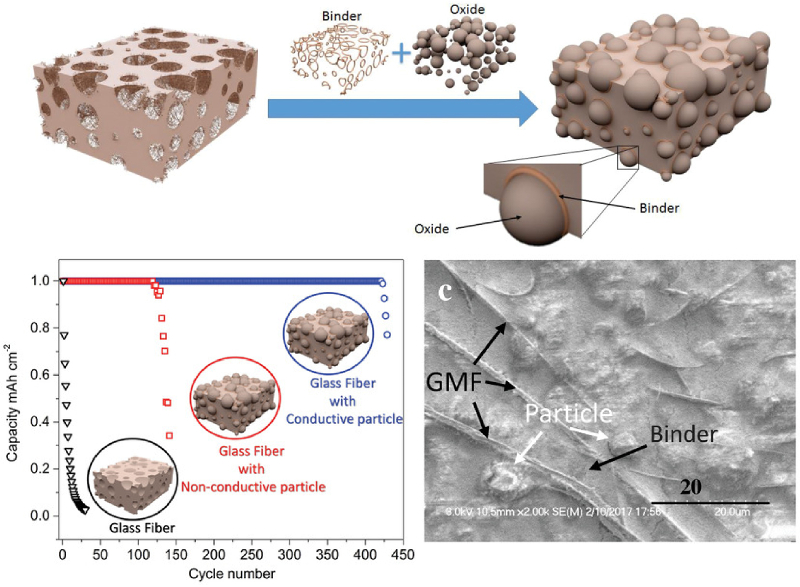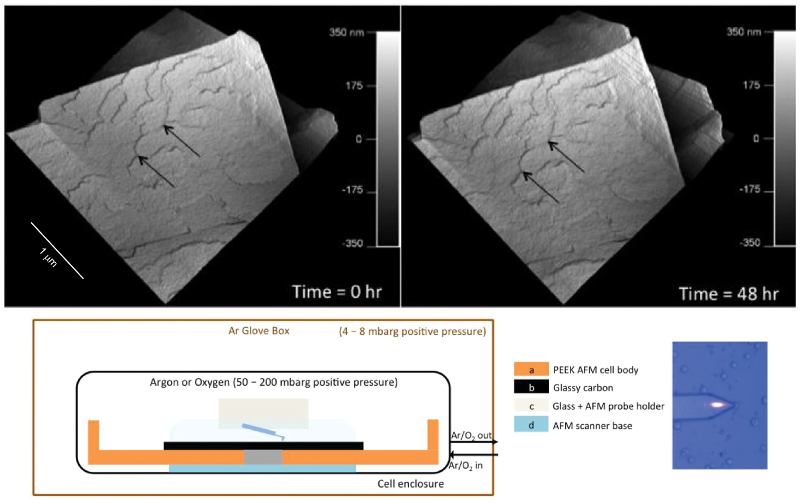AFM Systems
AFM Accessories
Learning
Contact Us
 Part of the Oxford Instruments Group
Part of the Oxford Instruments Group
Sodium–oxygen batteries designed with a mechanically-reinforced membrane showed remarkable rechargeability and high cycle stability. In-situ imaging with the Cypher ES AFM allowed researchers to monitor electrochemical discharge products and confirm battery stability.

Our addiction to portable electronics drives the demand for rechargeable batteries with high energy density. Sodium–oxygen batteries (NaOBs) are an attractive solution due to their outstanding predicted properties and an abundance of raw materials. Nonetheless, development of an NaOB with sufficient cycle stability has proven elusive.
Researchers at IBM–Almaden have demonstrated an NaOB with impressive performance, achieving rechargeability of >400 cycles and >96% oxygen efficiency. As reported in Advanced Energy Materials, their design featured a simple carbon electrode, ultradry electrolyte, and easily-prepared membrane separator. The membrane, which was mechanically reinforced with glass microfibers, was designed to suppress dendrite formation and minimize oxygen crossover.
A key feature for improving stability was the ultradry electrolyte. To examine stability, in-situ AFM experiments were performed on a particle of sodium superoxide (NaO2), the main electrochemical discharge product. Morphology images acquired over 48 hours in the liquid electrolyte showed the particle had well-defined nanoscale features that remained intact. (See online supplemental information for a movie.)
Besides demonstrating significant advances in NaOB technology, these results provide design principles that could help improve the performance of other types of rechargeable metal anode batteries.

Topography images were acquired in the liquid electrolyte using tapping mode with the Cypher ES AFM operating inside a glovebox. With the Cypher’s high spatial resolution and super-stable imaging, atomic/molecular steps on a single NaO2 particle were identified and tracked for two days. Unlike electron microscopy techniques, AFM techiques do not interact with or alter discharge products and thus enable in-situ studies of batteries and other electrochemical systems.
Citation: Y. Ansari, K. Virwani, S. Yahyazadeh et al., A highly stable sodium–oxygen battery using a mechanically reinforced membrane. Adv. Energy Mater. 8, 1802603 (2018). https://doi.org/10.1002/aenm.201802603
Note: The data shown here are reused under fair use from the original article, which can be accessed through the article link above.
